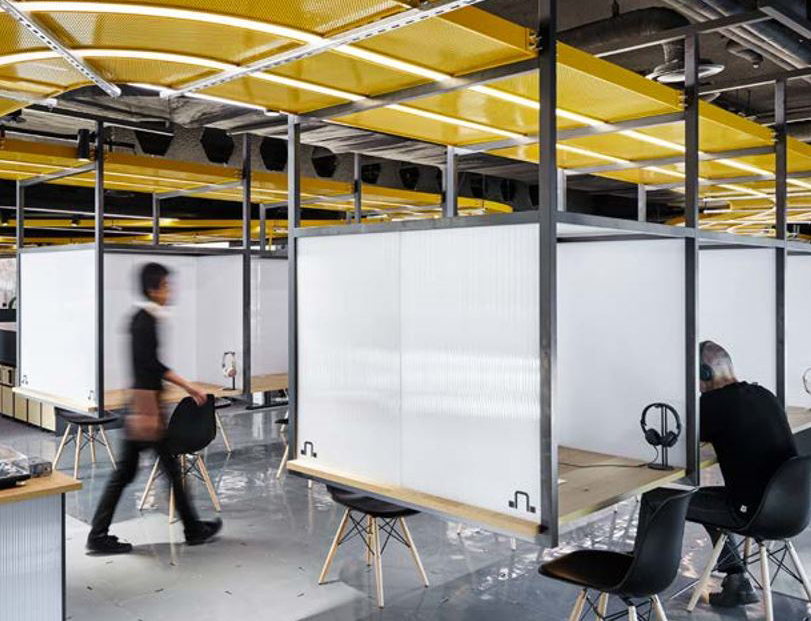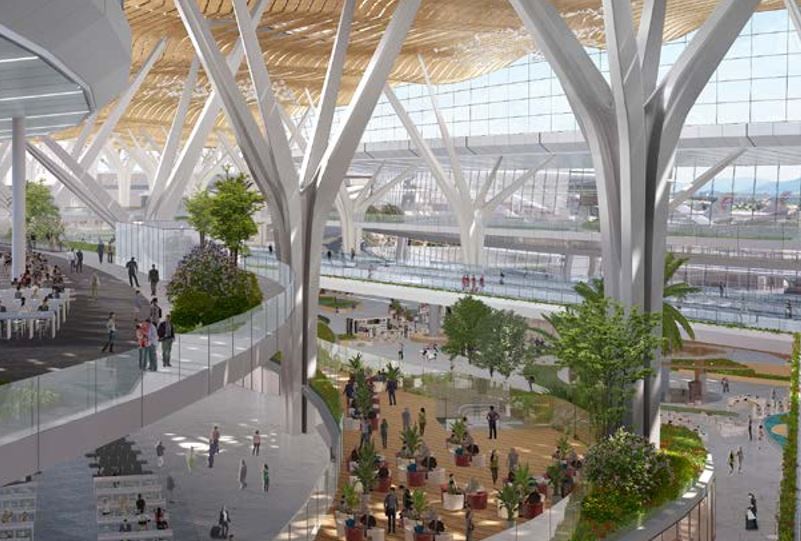The Future of Cities: Gensler’s Co-CEO Weighs In
Diane Hoskins on the design firm’s new forecast of how demographic shifts, climate change and other issues will re-shape real estate.

Diane Hoskins, Co-CEO, Gensler. Photo courtesy of Gensler
Gensler’s just-released 2019 design forecast, Shaping the Future of Cities takes a look at the challenges created by global population shift to cities— from climate change and disruptive technologies to tech giants and millennials who will make up 75 percent of all workers by 2025. We spoke to Gensler’s Washington, D.C.-based Co-CEO Diane Hoskins about some of the key trends from the research and how they could impact commercial real estate.
What’s the most surprising takeaway from this year’s Gensler Design Forecast?
Hoskins: We all watched Amazon and its effort to find the location for HQ2. If you look back 24 months or so, that whole process was probably the first time any of us have ever seen a company do something that unique.
We are seeing a continued trend of the major tech companies, when we see their growth, the numbers are staggering compared to what companies used to talk about—1,000 people, 5,000 people—(now) they’re talking about 50,000 people, 25,000 people. The scale and magnitude of these headquarters projects are really the new thing that we’re seeing out there.
The level of focus on workplace and the incredible level of investment that is being made there is certainly something we have seen at new levels in the last 12–18 months and predominately with the tech companies that are growing at incredible rates and, at the same time, really focusing on being people-centric.
What’s does it mean to be people-centric today?
Hoskins: What we’ve seen and what is different in this modern era of workplace design is really now having the data, having the metrics that help us to understand human optimization in the workplace. Now that is now being taken to another level with AI and sensors. It’s really the product of innovation and thinking about a problem in new ways or connecting technologies or processes that were never connected before to create something that was never thought of before. And so the ability to do that really does come from diverse people in a collaborative environment.
As companies strive to be more diverse to achieve innovation, how is workforce diversity shaping office design?
Hoskins: When our firm was doing the headquarters for Apple many years ago, Apple was one of the first companies to really recognize the power of diversity of thought and the serendipitous interactions that can happen in a workplace—those being extremely important—and knowledge sharing and that sort of lightbulb moment where work from one part of the company intersects with work from another part of the company in an unexpected way to create breakthroughs.
The workplace needs a space that allows that to happen or creates a platform for the planned and unplanned connectivity of diverse people, which is really what we’re trying to do in our designs.

Hyundai Capital’s new Beijing, China, headquarters. Photo courtesy of Gensler
How will millennial tastes and preferences shape the future of workspace design?
Hoskins: What we actually find is what a lot of people actually consider a millennial trend is really more a trend about the roles and positions versus the age group.
So when you are looking at millennials or boomers or x-ers or mixed groups, which is very much of the time consistent across those individuals than when you start to look at roles within companies. You do see trends in terms of the need for privacy, the need for collaboration and how much individual work you do, if you’re more in a supervisor role—regardless of your generation—you’re going to need more collaborative space.
How is climate change impacting new building design?
Hoskins: Forty percent of greenhouse global gas emissions are generated from buildings and so the fact that we’ve got that incredible contribution of greenhouse gas from buildings means that if we are able to address the building issue, there is a place that a significant impact can be made.
I like to talk about the PNC Tower in Pittsburgh, which is virtually net zero and utilizes something most people would think would be impossible, which is that even as a 30-story building it has operable windows and it allows fresh air into the building. Using what we now have, which are amazing automatic controls, AI systems within the building, it knows exactly what the air temperature is outside. It actually automatically opens those windows and brings in fresh air in the exact right amount, knowing exactly what the temperature is so it doesn’t have to be heated or cooled again bringing a level of fresh air to the building that is unbelievably healthful.
What about existing buildings?
Hoskins: It is the existing building stock that we all need to focus on because these buildings are 50 years old, 75 years old, 10, 20, 30 years old with old systems and energy efficiency nowhere near what a modern system could create and certainly a system that also includes sensors and AI to really understand the output and to put some levels of control into the building.
And then (there’s) the amount of energy that it takes to create steel and concrete—the two industries that contribute more CO2 than any industry on the planet.
So if we stop creating more steel and more concrete just because of new buildings, we actually make a massive impact in the CO2 conversation. So there is a significant effort on our part to help our clients. We have a question: “Is a new building needed at all?”
How will data analytics change the built environment in the future?
Hoskins: We have a group that we’ve just started that we call our Intelligent Places Practice, that is working on these kinds of things, creating the digital twin model for our clients, and also what we call “learning labs,” which are ways of setting up an experiment where you set up the design that you want to potentially implement and you use sensors and surveys and other data capture to understand how it works.

Kunming Changshui International Airport. Photo courtesy of Gensler
What conversations are you having about mobility innovations, like scooters and autonomous vehicles?
Hoskins: It’s kind of non-sustainable right now when we’ve got no place for any of these vehicles to go in a reasonable way. And then we also have more endangerment of pedestrians. How do we really give our streets back to the pedestrians and find the appropriate spaces for the uber car drop offs and the logistics of the deliveries? That needs to happen with the scooters and whatever else is next after that. And then how do we really make cities places for people and the kind of walkability that we know is so important?
You’re a member of the World Economic Forum’s Global Future Council on Cities & Urbanization. Are solutions to issues like rising CO2 levels on the horizon?
Hoskins: Everyone is still in beta. There are many one-offs. No one has figured out scalable solutions or ideas from the standpoint of leveraging connectedness and connected systems. We’re in a place where there’s a lot of expectation, a lot of hopefulness around connected cities and what will be possible if we can understand CO2 from a city level vs. a building level, or even a building level, because we can’t even really measure it from that level right now. We’re going to need connected systems in order to be able to do that and no city has been able to do this at scale.
Can you talk a little bit about Hyundai Capital’s new China headquarters design and how that might shape the future of office design?
Hoskins: That really offers an indoor environment that mimics natural settings with small gardens in the workplace and really those are all about that whole idea of human health and purifying the internal air. This is really an important project for us in demonstrating new ideas, which are frankly kind of old ideas, which is bringing the outside inside. And then from a cultural standpoint and a community-building standpoint, centralizing and creating places on each of the floors that represent the traditional tea pavilions in Chinese culture. It’s so important that workplace is also embedded in culture, and it’s not about that you go to a workplace in New York and it’s the same as a workplace in China or it’s the same as a workplace in India.







You must be logged in to post a comment.